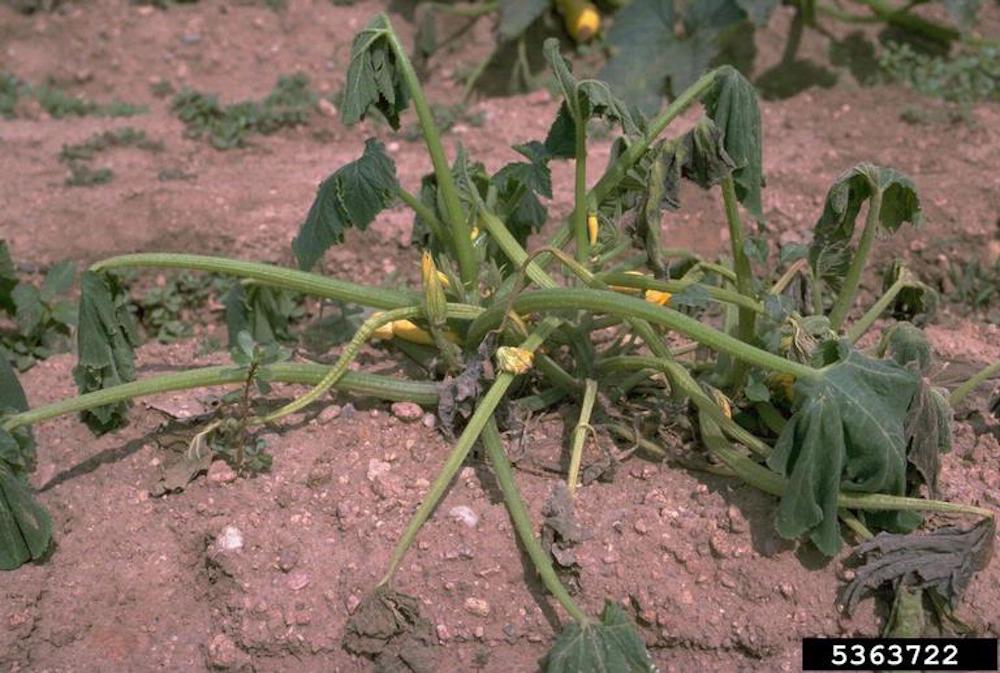Phytophthora Blight









The Greek word "Phytophthora" roughly translates to "plant destruction" in English. That's a good description for what the pathogens behind this disease do to vegetables. Phytophthora blight encompasses several stages of disease, known at various stages as damping off, root rot, crown rot, leaf blight, stem wilt, stem rot, and fruit rot. In susceptible vegetables, this blight affects all plant parts.
Because of its reliance on moisture to wreak havoc in gardens, Phytophthora blight is known as a water mold. Saturated soil and prolonged wet, warm weather allow this soil-borne destroyer to flourish and spread via a combo of wind and rain, irrigation, or surface water. Bell peppers, eggplants, and cucurbit crops, such as cucumbers, melons, and zucchini, are especially vulnerable to this disease. Phytophthora blight is closely related to the destructive late blight that damages tomatoes and potatoes.
Phytophthora Blight Identification/Symptoms: Symptoms vary based on the plant involved and the stage of blight. Though the disease starts within infected soil, the first symptoms come above ground, often when seemingly healthy, fruit-forming plants suddenly wilt and die midseason.
Stem cankers develop, often at the soil line, and stems begin to rot inside. Leaves show dark spots that enlarge until foliage looks bleached and scorched. Infected fruits stay attached to the plant but develop dark, water-soaked blotches that become covered in cottony white mold. Numerous plants in an area often develop symptoms all at once.
How to Control Phytophthora Blight: Once Phytophthora blight infects your vegetables, plant damage is irreversible. Control of this deadly disease relies on preventive measures and care. Avoid planting in low-lying spots or areas with poor drainage. To improve drainage, consider planting peppers and other susceptible crops in mounded, raised garden beds or container gardens.
Avoid overhead watering that can produce surface runoff, and consider slow drip irrigation instead. Hardy Phytophthora blight pathogens will survive in both hot summer and cold winter compost piles. Remove infected plants immediately, bag and dispose of infected debris, and always keep your garden clean.
Phytophthora Blight Tip: When possible, plant Phytophthora-resistant vegetable varieties. Unfortunately, not many resistant varieties exist. Always allow at least three years between planting an area with the same or closely related plants.
This is especially important for the tomato family, which includes bell and chili peppers, eggplants, potatoes, tomatoes, and the cucurbit family, which includes cucumbers, zucchini, melons, pumpkins, and other summer and winter squash.
Always read product labels thoroughly and follow instructions, including guidelines for treatable plants, application rates and frequencies, and pre-harvest intervals (PHI) for edible crops.
Photo Credit:
Don Ferrin, Louisiana State University Agricultural Center, Bugwood.org (CC BY 3.0 US)
Don Ferrin, Louisiana State University Agricultural Center, Bugwood.org (CC BY 3.0 US)
David B. Langston, University of Georgia, Bugwood.org (CC BY 3.0 US)
David B. Langston, University of Georgia, Bugwood.org (CC BY 3.0 US)
David B. Langston, University of Georgia, Bugwood.org (CC BY 3.0 US)
Howard F. Schwartz, Colorado State University, Bugwood.org (CC BY 3.0 US)
Howard F. Schwartz, Colorado State University, Bugwood.org (CC BY 3.0 US)
Elizabeth Bush, Virginia Polytechnic Institute and State University, Bugwood.org (CC BY 3.0 US)

